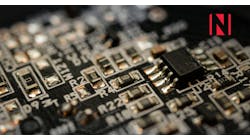Scientists at SINTEF, an independent research organization in Norway, are working on developing electronic components that dissolve once they are no longer needed. Given the abundance of e-waste produced every year, there is a growing demand for biodegradable and dissolvable electronics.
Dissolvable electronics require special materials. The components developed by SINTEF are printed on a wafer-thin silicon surface. The circuits are only a few nanometers thick and are made of magnesium. Designing the component is easy. For scientists, the challenge lies in developing a coating to protect the circuit. The coating is necessary for two reasons. First, it has to be intact so that external fluids would not reach the circuit. Second, the coating has to be in place until the component is no longer needed.
Depending on the strength of the coating, the devices can be made to last a few days, a week or even a year.
While the devices can be used to produce consumer electronics with a short lifecycle, they can also be applied to other areas.
The designs can be used as sensors. For example, SINTEF researchers believe a sensor package can be used to capture data following an oil spill. The sensor would be designed to function in seawater and would be in place until the required data is obtained.
In addition to their use as environmental sensors, biodegradable electronics can function as medical implants designed to diagnose or treat. Dissolvable electronics have already been identified as suitable for reducing the invasiveness of a surgery. The component is planted inside the body to speed up healing.
In lab experiments, similar components have been tested on rats. The electronic circuits accelerated the healing process in rats, and once the procedure was complete, the components dissolved.
The Defense Advanced Research Projects Agency (DARPA) has already supported further research in this field. DARPA believes that dissolvable electronics will be necessary for certain defense technologies. Products can now be built with a set lifecycle. They can also be equipped with a remote destruction trigger or be built so it disintegrates within certain environments, leaving no trace of its presence.
The components can also be implanted into a soldier’s body, allowing medical teams to monitor vital signs and keep track of the soldier’s whereabouts. Once the period of activity duty has ended, the component will disintegrate.
DARPA's video shows an electronic component dissolve in water.
How will biodegradable electronics influence the market for components?
In a previous post, we looked at how 3D electronic printers will change the supply side of the electronic components industry. If electronics are built with a set lifecycle in mind, we can certainly foresee another gradual shift.
First, a pre-determined lifecycle eliminates the availability of obsolete components. Even if an older component is required, a 3D printer and the blueprint of the circuit board are all that would be needed to replicate the chip. Second, a set lifecycle will reduce the incidence of counterfeit electronics. Salvaged e-waste can no longer be used to produce a sub-standard component. While less important, biodegradable electronics will also free up warehouse space, allowing companies to choose smaller office spaces.









